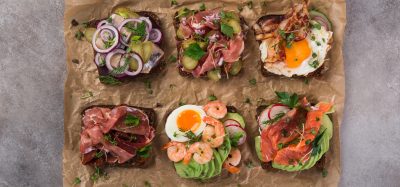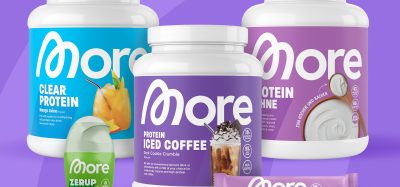Top five prebiotic rich foods revealed
- Like
- Digg
- Del
- Tumblr
- VKontakte
- Buffer
- Love This
- Odnoklassniki
- Meneame
- Blogger
- Amazon
- Yahoo Mail
- Gmail
- AOL
- Newsvine
- HackerNews
- Evernote
- MySpace
- Mail.ru
- Viadeo
- Line
- Comments
- Yummly
- SMS
- Viber
- Telegram
- Subscribe
- Skype
- Facebook Messenger
- Kakao
- LiveJournal
- Yammer
- Edgar
- Fintel
- Mix
- Instapaper
- Copy Link
Posted: 24 July 2023 | Grace Galler | No comments yet
Researchers have highlighted the top five foods that you should take note of when looking for what packs the greatest prebiotic punch.


Unveiling the top five foods that are rich in prebiotics, researchers have compiled a list that they claim pack the greatest prebiotic punch.
According to the Mayo Clinic, prebiotics are foods are typically high fibre foods that “act as a food for human microflora” and are used “with the intention of improving the balance of these microorganisms”.
The scientists that carried out the study claimed that there is growing evidence that consuming prebiotics “stimulate beneficial bacterial growth in your gut [and] can help to maintain a healthy gut microbiome”.
By using pre-existing literature, researchers Cassandra Boyd, a master’s student at San José State University and Assistant Professor John Gieng, PhD, set out to find out which foods had the highest prebiotic count.
According to the study, the top five foods include: dandelion greens, Jerusalem artichokes, garlic, leeks, and onions.
“Eating prebiotic dense foods has been indicated by previous research to benefit health. Eating in a way to promote microbiome wellness while eating more fibre may be more attainable and accessible than you think,” said Boyd.
Though similar in name, prebiotics are different from probiotics as the latter contains live microorganisms. However the researchers claim “both can potentially benefit microbiome health, but they work in different ways”.
While most dietary guidelines do not currently specify a recommended daily allowance for prebiotics, the International Scientific Association for Probiotics and Prebiotics recommends an intake of at least five grams per day.
To carry out the study, the researchers used previously published scientific findings to analyse the prebiotic content of 8,690 foods contained in the Food and Nutrient Database for Dietary Studies.
About 37 percent of the foods in the database were found to contain prebiotics. The top five foods (dandelion greens, Jerusalem artichoke, garlic, leeks, and onions) all have amounts ranging about 100-240 milligrams of prebiotics per gram of food (mg/g). Meanwhile, other prebiotic rich foods included onion rings, creamed onions, cowpeas, asparagus, and Kellogg’s All-Bran cereal, each containing around 50-60 mg/g.
Prebiotics can improve sleep by influencing gut bacteria, study finds
“The findings from our preliminary literature review suggest that onions and related foods contain multiple forms of prebiotics, leading to a larger total prebiotic content,” said Boyd.
“Multiple forms of onions and related foods appear in a variety of dishes as both flavouring and main ingredients. These foods are commonly consumed by Americans and thus would be a feasible target for people to increase their prebiotic consumption.”
According to the team’s findings, Boyd claimed a person would need to consume approximately half of a small (four-ounce) onion to get five grams of prebiotics.
However, wheat-containing items rank lower on the researchers list and foods with little or no prebiotic content included dairy products, eggs, oils, and meats.
Going forward, the researchers hope that the study will provide a basis to help other scientists assess the health impacts of prebiotics and inform future dietary guidelines. They outlined that “more research is needed to understand how cooking impacts prebiotic content and to better assess foods that contain multiple ingredients”.
Related topics
Health & Nutrition, Quality analysis & quality control (QA/QC), Research & development, The consumer, World Food
Related organisations
Related regions
Related people
Cassandra Boyd, Food and Nutrient Database for Dietary Studies, John Gieng









